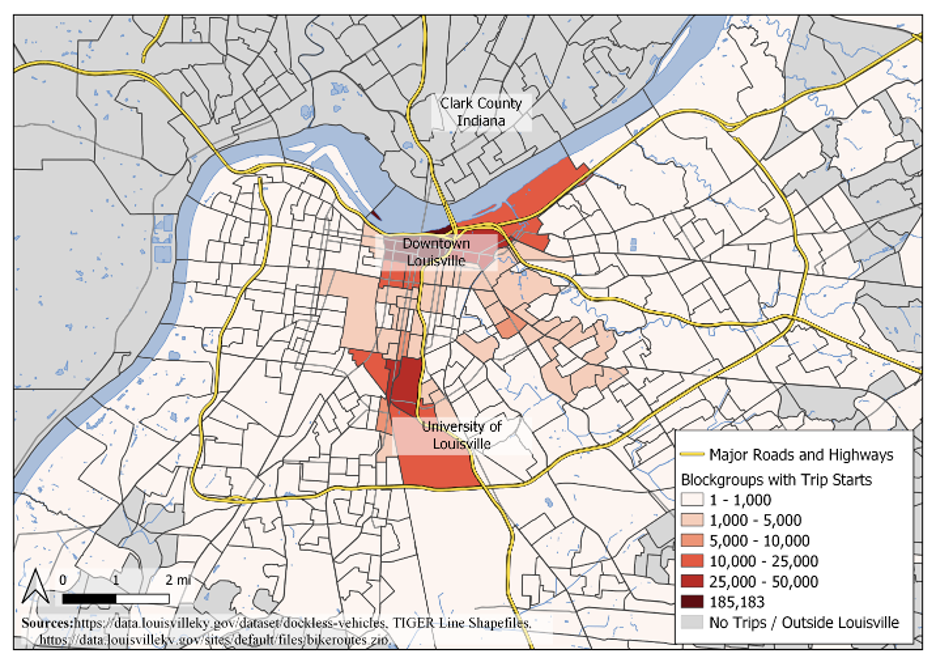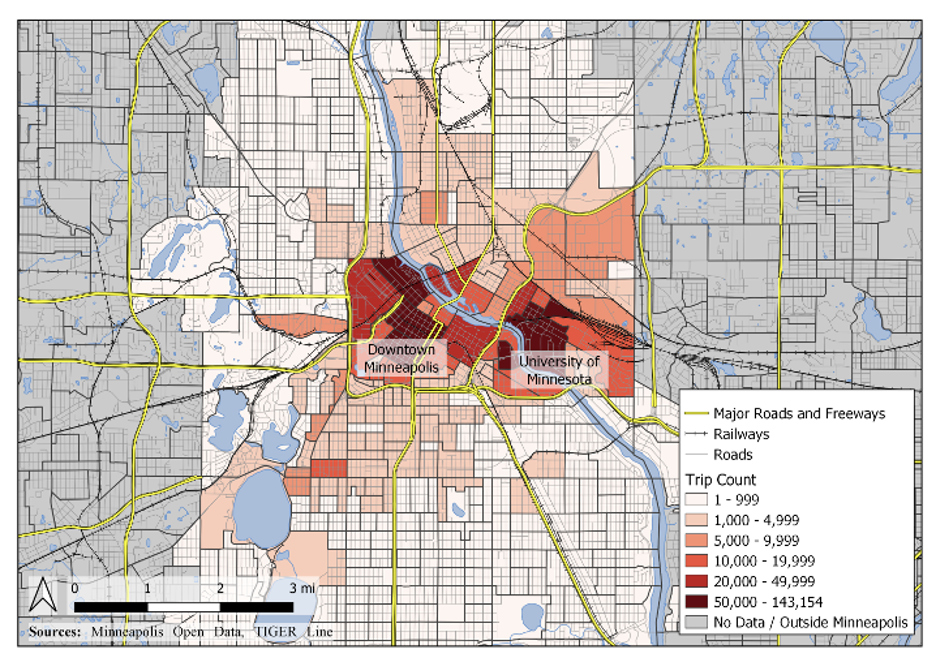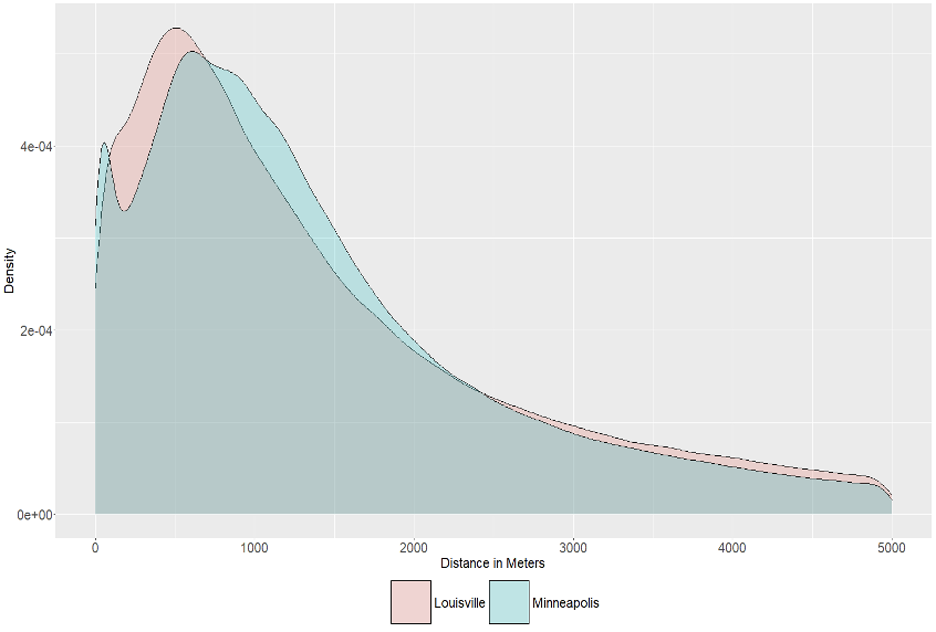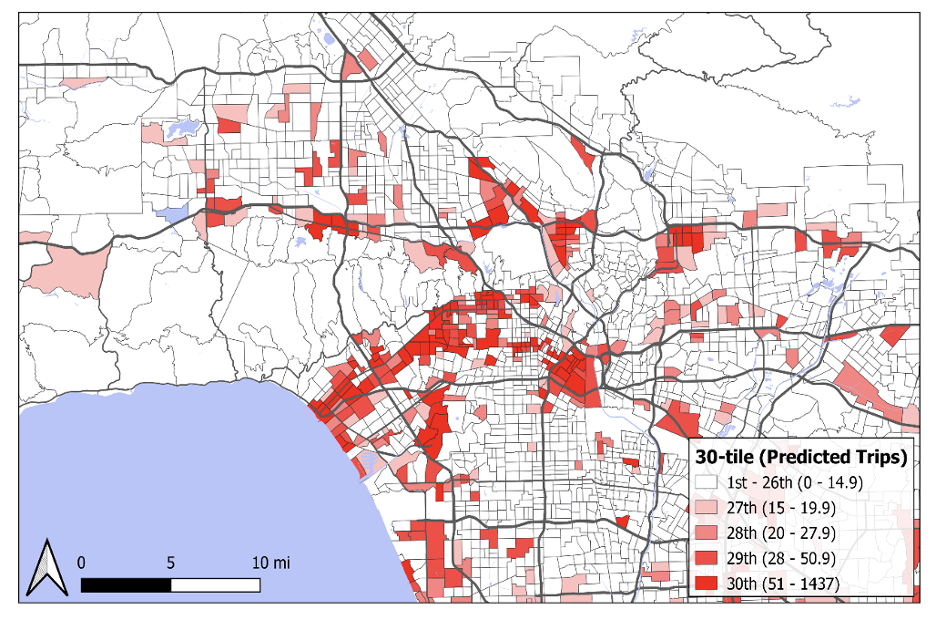News | USC's Marlon Boarnet Presents Land Use Modelling for Dockless Scooter Travel Patterns
Stop the VideoNews

USC's Marlon Boarnet Presents Land Use Modelling for Dockless Scooter Travel Patterns
Saturday, November 27, 2021
by Chris Keating, USC Master of Urban Planning, 2023
On November 3, METRANS and the National Center for Sustainable Transportation (NCST) hosted Marlon Boarnet who presented his transportation research to an audience of students, academics, and practitioners. NCST is a “consortium of leading universities committed to advancing an environmentally sustainable transportation system through cutting-edge research, direct policy engagement, and education of our future leaders,” of which METRANS is a part.
Titled “Dockless Scooter Travel: A Land Use Model with Implications for California,” this event showcased the research of Dr. Marlon Boarnet and his research team, PhD candidates Zakhary Mallett and Clemens Pilgram. Dr. Marlon Boarnet is Professor of Public Policy and Chair of the Department of Urban Planning and Spatial Analysis at the University of Southern California (USC). Dr. Boarnet’s research focuses on the links between land use and travel behavior, the implications for greenhouse gas emissions, and the economic impacts of transportation infrastructure.

Dr. Marlon Boarnet
Professor of Public Policy and Chair of the Department of Urban Planning and Spatial Analysis,
Sol Price School of Public Policy, University of California (USC)
The event was the fourth in-person seminar hosted by METRANS since March 2020, attracting a passionate crowd of private-sector transportation professionals, faculty, researchers, and students at all levels of study. The session began with a formal presentation and ended with a discussion of the audience’s questions.
Dr. Boarnet began by discussing the necessity of the research and shared that an understanding of dockless travel as a mode, by examining land use correlates, provides valuable insights into how people use this mode of transportation. Dockless scooter travel was first seen in American cities like Los Angeles in 2017 by companies like Lime, Lyft, and Bird. A potential rider would see the parked scooter on the sidewalk, scan the QR code on its respective company’s mobile app, and ride to their destination at 15 miles per hour, charged by the minute. Once at their destination, the rider would simply lower the kickstand on the sidewalk -- or dedicated parking area, in some cities -- and end the ride on the same application in began on.
Dr. Boarnet discussed the private nature of the data on dockless scooters, private because the mode of transportation is both novel and is operated solely by the private sector. In addition, Dr. Boarnet hoped to use Los Angeles Mobility Data Specification (MDS), which reports the required, anonymized data collection from dockless scooter companies. However, the City of LA does not release MDS data because of data concerns. Data from a private provider, the other data source he anticipated using, could not be obtained due to the COVID-19 epidemic. Due to this constriction, Dr. Boarnet and his research team explored out-of-sample prediction using a model they created to understand the potential for dockless travel in cities where data is not readily available.
Dr. Boarnet worked with the three American cities that publicly release dockless scooter data: Minneapolis, Louisville, and Austin. The research team utilized Minneapolis and Louisville because they allow matching the data to census block groups, while Austin only allows matching to census tracts.

Map of Trip Starts by Block Group (Louisville, KY). Clusters of dockless scooter travel appear near Downtown Louisville and the University of Louisville.

Map of Trip Starts by Block Group (Minneapolis, MN). Clusters of dockless scooter travel appear near Downtown Minneapolis and the University of Minnesota.
Dr. Boarnet found that half or more of the block groups in the data analyzed had zero dockless scooter trips. Minneapolis’ mean trip count was 8.16, while Louisville’s was 1.63. Minneapolis’ data is from August 2018 to January 2020, and Louisville’s data ranges from July 2018 to November 2018 and May 2019 to November 2019. Minneapolis’ data skips over the winter months because scooters are not deployed at that time due to the prohibitive weather conditions.

Density plot of Scooter Trip Lengths for Trips under 5000 Meters (3.1 Miles).
Trip length density peaks around 1.2km and drops rapidly afterward.
Dr. Boarnet executed a regression analysis with tripcount (the number of trips per day per block group) as the dependent variable and job density, population density, restaurant density, nightlife density, school density, university density, place of worship density, and the distance from downtown (distance from the census tract with the highest employment density) as independent variables.

Dr. Boarnet summarizes the results of the regression analysis in Minneapolis, MN.
Dr. Boarnet’s presentation outlined that university density, job density, and nightlife density were the largest land use correlations. On the other hand, he observed a dampening effect from distance from downtown -- the further from the central business district (CBD), the fewer dockless scooter trips.
To test the model Dr. Boarnet and his research team created, they ran the model to predict dockless scooter use in Austin, TX, and compare it with available data. The research found that the Minneapolis model correctly predicted a tract in the top 75th percentile of trip generation in Austin >60% of the time. These findings were good news for the researchers, and they were hopeful that these findings suggest a possibility of out-of-sample predictive power.

Predicted Daily Scooter Trips for Los Angeles, Utilizing the Minneapolis Model.
Dr. Boarnet concluded the seminar by discussing the use of the Minneapolis model in the top California cities: Los Angeles, the San Francisco Bay Area, San Diego, and Santa Barbara. One restraint of the model Dr. Boarnet gave was that the model could misfire in suburban locations , such as the Irvine Business Complex, because of job density’s weight on the model. Despite high job density in suburban corporate land uses, Dr. Boarnet found that they do not produce dockless scooter travel because of their urban design.
Ultimately, the researchers stated that the Minneapolis model could be useful for an initial screen for dockless trip behavior that can be supplemented with local knowledge from planners.
About the Author:
Chris Keating is a first-year Master of Urban Planning student at the USC Price School of Public Policy, concentrating in Mobility and Transportation Planning. Chris heads METRANS’ Fast Fact team as team lead, producing short, digestible summaries of cutting-edge transportation research for a broad audience. Chris is interested in urban mass transit, land use, urban design, and how all of those connect to create equitable and sustainable cities.
News Archive
- December (1)
- November (6)
- October (4)
- September (2)
- August (3)
- July (4)
- June (3)
- May (7)
- April (8)
- March (11)
- February (8)
- January (7)
- December (7)
- November (8)
- October (11)
- September (11)
- August (4)
- July (10)
- June (9)
- May (2)
- April (12)
- March (8)
- February (7)
- January (11)
- December (11)
- November (5)
- October (16)
- September (7)
- August (5)
- July (13)
- June (5)
- May (5)
- April (7)
- March (5)
- February (3)
- January (4)
- December (4)
- November (5)
- October (5)
- September (4)
- August (4)
- July (6)
- June (8)
- May (4)
- April (6)
- March (6)
- February (7)
- January (7)
- December (8)
- November (8)
- October (8)
- September (15)
- August (5)
- July (6)
- June (7)
- May (5)
- April (8)
- March (7)
- February (10)
- January (12)















